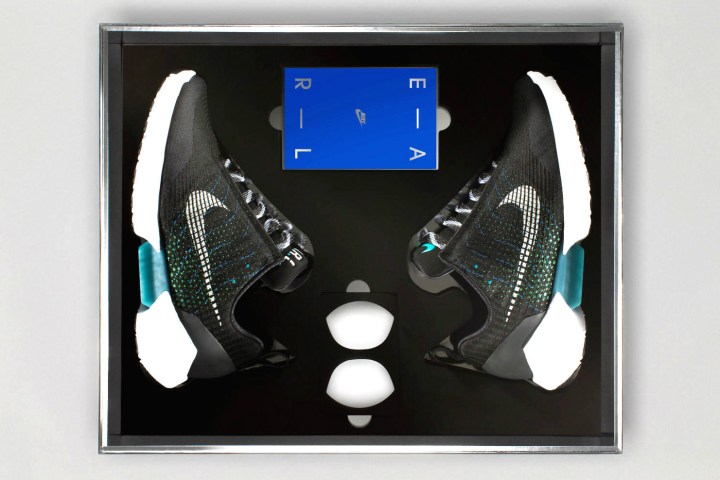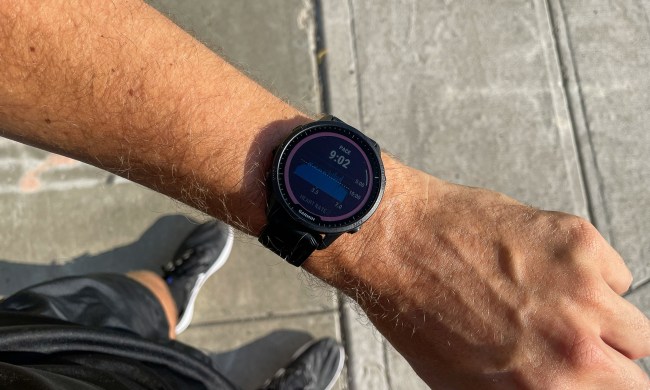
They’ve been a long time coming, but Nike’s much-anticipated HyperAdapt 1.0 footwear – inspired by the snazzy self-lacing MAG shoes worn by Marty McFly in Back to the Future II – are finally hitting stores today. Well, two stores, to be precise. Both in New York City.
Costing a cool $720 a pop, the specially designed footwear features automatic “adaptive fit” technology powered by a so-called “lacing engine” located at the base of the shoe. As you slip your foot inside, it triggers a sensor in the heel that causes the shoe to gently tighten. Two buttons on the outside of the sneaker allow for smaller adjustments to give you the absolute snuggest of fits.
Nike released an image of the packaging on Thursday. It shows not only the main attraction, but also a Quick Start guide, charging pucks that magnetically attach to the bottom of each sneaker, and an AC adapter. The sportswear giant says that with average use the incorporated battery should keep the tech functioning for up to two weeks on a single charge. The shoe’s built-in lights glow three different colors to let you know the state of the battery. A full charge takes about three hours.
The HyperAdapt shoe was co-designed by Tinker Hatfield and Tiffany Beers. Speaking earlier this year, Hatfield said he believes adaptive lacing could be a hit with athletes as the system provides a “tailored-to-the-moment” custom fit.
“It’s amazing to consider a shoe that senses what the body needs in real-time,” Hatfield said, adding that the unique design “eliminates a multitude of distractions, including mental attrition, and thus truly benefits performance.”
So where exactly can you grab a pair of these flashy, high-tech sneakers? Why, at Nike stores, of course. Both are in Manhattan – Nike Soho on the corner of Broadway and Spring Street, and the Nike+ ClubHouse at 45 Grand – which means most of the world’s sneaker fans won’t have the chance to slip their feet inside a pair. However, Nike does say on its website that the new shoes will be landing in additional select stores later this month. Presumably outside of Manhattan.



